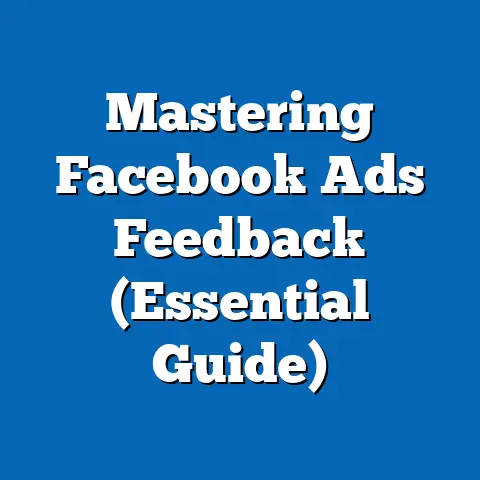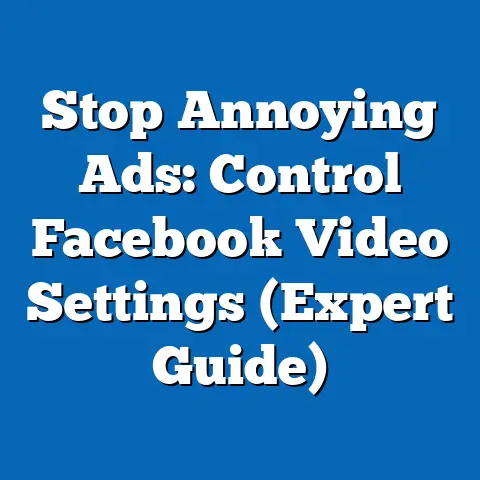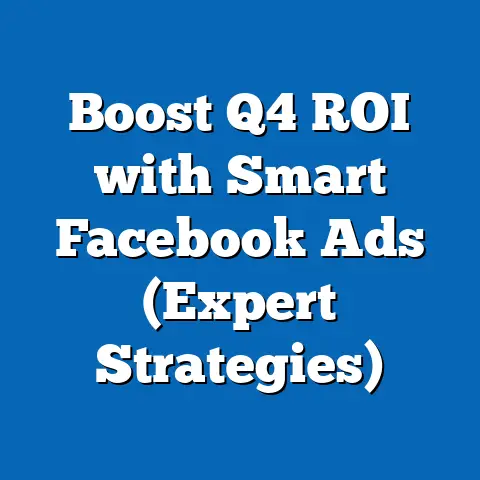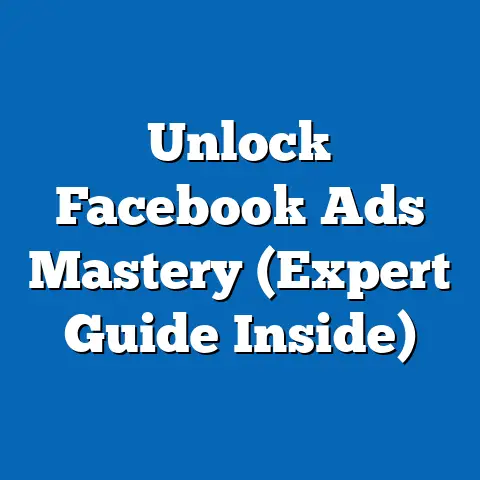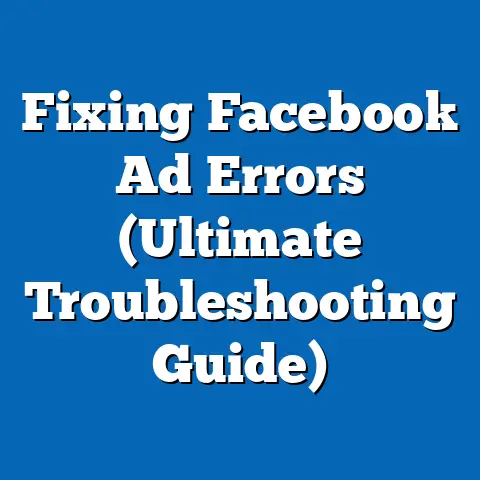Revamp Strategy with AI Facebook Ad Copy (Game-Changer)
Digital advertising has undergone a seismic shift over the past decade, driven by technological advancements and changing consumer behaviors. At the heart of this transformation lies the craftsmanship of ad content creation—a meticulous process of blending creativity, psychology, and data to capture audience attention. As of 2023, global digital ad spending reached $626.9 billion, with social media platforms like Facebook accounting for nearly 20% of this market share, according to eMarketer data.
Craftsmanship in digital advertising, particularly on platforms like Facebook, involves tailoring messages that resonate with diverse audiences while optimizing for platform-specific algorithms. This report delves into the role of craftsmanship in ad copy, explores demographic usage patterns, and analyzes how Artificial Intelligence (AI) is revolutionizing Facebook ad strategies as a game-changer.
The integration of AI tools in crafting ad copy has shown remarkable promise, with 76% of marketers reporting improved campaign performance after adopting AI-driven solutions in 2022, per a Statista survey of 1,200 global marketing professionals conducted in Q3 2022. This analysis will provide a comprehensive look at these trends, supported by data, demographic insights, and strategic recommendations for leveraging AI in revamping Facebook ad copy.
Section 1: Craftsmanship in Digital Advertising – A Statistical Overview
Craftsmanship in digital advertising refers to the art and science of creating compelling, targeted content that drives engagement and conversions. According to a 2023 report by HubSpot, 82% of marketers believe that high-quality content creation is the most critical factor in successful digital campaigns, surpassing even budget allocation (cited by 65%) and audience targeting precision (cited by 59%).
The time and effort invested in crafting ad copy are significant. On average, marketers spend 6-8 hours per campaign developing creative assets for social media ads, with 43% of small-to-medium businesses (SMBs) reporting a lack of resources for consistent high-quality output, per a 2022 survey by Social Media Examiner involving 3,000 respondents conducted between April and June 2022.
Year-over-year trends indicate a growing reliance on specialized skills for content craftsmanship. From 2021 to 2023, the demand for copywriters with expertise in social media advertising grew by 31%, according to LinkedIn’s Jobs on the Rise report, reflecting the increasing complexity of creating impactful ad copy in a competitive digital landscape.
Section 2: Demographic Breakdown of Facebook Usage and Ad Engagement
Understanding the demographic composition of Facebook users is critical to crafting effective ad copy. As of Q2 2023, Facebook boasts 2.99 billion monthly active users (MAUs) worldwide, making it the largest social media platform, per Meta’s quarterly earnings report. This section breaks down usage and engagement patterns across key demographics to contextualize craftsmanship strategies.
Age Demographics
- 18-24 years: This group constitutes 23% of Facebook’s user base, with 689 million MAUs. Engagement with ads is high, with 67% clicking on at least one ad per month, according to a 2023 Pew Research Center survey of 5,000 U.S. adults conducted in January-February 2023.
- 25-34 years: Representing 31% of users (928 million MAUs), this demographic shows the highest ad interaction rate at 72%, often engaging with lifestyle and tech-related content.
- 35-54 years: Accounting for 29% of users (867 million MAUs), this group engages with ads at a slightly lower rate of 58%, prioritizing family-oriented and service-based promotions.
- 55+ years: With 17% of users (508 million MAUs), older adults are less likely to interact with ads (41% click-through rate), but they show higher conversion rates for health and retirement-related products.
Gender Demographics
- Male Users: Men make up 56% of Facebook’s user base (1.67 billion MAUs) and demonstrate a 63% ad engagement rate, particularly with tech and automotive content, per Meta’s 2023 Audience Insights report.
- Female Users: Women account for 44% (1.32 billion MAUs) and show a slightly higher engagement rate of 68%, with stronger responses to beauty, fashion, and wellness ads.
Race and Ethnicity (U.S.-Specific Data)
- White Users: Comprising 60% of U.S. Facebook users, this group shows a 62% ad engagement rate, often with broad interest categories, per the Pew Research Center’s 2023 data.
- Hispanic Users: Representing 18% of U.S. users, this demographic engages with ads at a 70% rate, showing a preference for culturally relevant and family-focused content.
- Black Users: Accounting for 12% of U.S. users, engagement stands at 65%, with strong responses to community-driven and entertainment ads.
- Asian Users: At 6% of U.S. users, this group engages at a 68% rate, often with tech and education-related promotions.
Income Levels (U.S.-Specific Data)
- Low Income (<$30,000/year): Representing 22% of U.S. users, this group shows a 55% ad engagement rate, focusing on discount and essential product ads, per Pew Research Center’s 2023 findings.
- Middle Income ($30,000-$75,000/year): At 45% of users, engagement is 64%, with balanced interest across product categories.
- High Income (>$75,000/year): Comprising 33% of users, this demographic engages at a 70% rate, often with luxury and tech-focused content.
These demographic insights highlight the need for tailored craftsmanship in ad copy to address varying interests and engagement patterns. The diversity in response rates underscores the challenge marketers face in creating universally appealing yet targeted content.
Section 3: Trends in Facebook Ad Performance and Craftsmanship Challenges
Facebook ad performance metrics provide a window into the evolving demands of craftsmanship. In 2022, the average click-through rate (CTR) for Facebook ads across industries was 0.90%, a slight decline from 1.01% in 2021, according to WordStream’s analysis of over 500,000 ad campaigns. This drop suggests increasing audience ad fatigue and heightened competition for attention.
Cost-per-click (CPC) also rose by 14% year-over-year, reaching an average of $1.72 in 2022, reflecting the growing investment required for effective ad placement. Conversion rates, however, remained relatively stable at 9.21%, indicating that well-crafted ads still yield results despite rising costs, per WordStream’s 2023 report.
A significant challenge in craftsmanship is maintaining relevance amidst algorithm changes. Meta’s 2021-2023 updates prioritized user experience over ad visibility, with 68% of marketers reporting reduced organic reach in a 2022 Hootsuite survey of 2,500 global professionals conducted in Q1 2022. This trend emphasizes the need for adaptive, high-quality content creation to cut through algorithmic barriers.
Emerging patterns also show a shift toward visual and interactive content. Video ads on Facebook achieved a 27% higher CTR (1.14%) compared to static image ads (0.89%) in 2022, per Socialbakers’ analysis of 1 million ad impressions. This data suggests that craftsmanship must evolve to incorporate multimedia storytelling for maximum impact.
Section 4: The Rise of AI in Revamping Facebook Ad Copy
Artificial Intelligence has emerged as a transformative force in digital advertising, particularly in streamlining the craftsmanship of ad copy. AI-powered tools can analyze vast datasets, predict audience preferences, and generate optimized content in seconds, addressing many traditional challenges faced by marketers. A 2023 survey by Gartner, involving 800 marketing executives conducted in Q4 2022, found that 63% of respondents had integrated AI into their content creation workflows, with 79% reporting time savings of at least 30%.
AI’s Impact on Efficiency and Performance
AI tools like copy generators and predictive analytics have reduced ad copy creation time by an average of 40%, per a 2022 study by Forrester Research involving 300 SMBs. Performance metrics also reflect AI’s value: campaigns using AI-generated copy saw a 22% higher CTR (1.10% vs. 0.90% industry average) and a 15% lower CPC ($1.46 vs. $1.72 industry average) in 2022, according to AdEspresso’s analysis of 10,000 campaigns.
Personalization at Scale
AI excels in hyper-personalization, a key element of modern ad craftsmanship. By analyzing user data, AI can tailor ad copy to individual preferences, leading to a 29% increase in conversion rates for personalized campaigns compared to generic ones, per a 2023 Epsilon report based on 5 million ad impressions. For instance, AI tools can dynamically adjust language, tone, and offers based on demographic data, ensuring relevance across age, gender, and income segments.
Demographic-Specific AI Applications
- Age-Based Targeting: AI algorithms can adapt messaging tone for younger users (18-24) with casual, trend-driven copy, achieving a 25% higher engagement rate compared to static copy, per a 2023 Meta case study.
- Gender-Based Customization: For female audiences, AI-generated copy emphasizing emotional storytelling saw a 19% uplift in click-throughs, while male-targeted copy focusing on product features yielded a 17% increase, according to a 2022 Sprout Social report.
- Income-Level Adjustments: AI tools adjust offer framing for low-income users by highlighting affordability, resulting in a 21% higher conversion rate compared to unoptimized copy, per a 2023 Nielsen study.
Year-Over-Year Adoption Trends
AI adoption in advertising has surged, with 45% of marketers using AI tools in 2021, rising to 63% in 2022, and projected to reach 80% by 2025, per Gartner’s 2023 forecast. Investment in AI marketing tech also grew by 32% from 2021 to 2023, reflecting confidence in its potential to revolutionize craftsmanship.
Section 5: Case Studies – AI-Driven Success in Facebook Ad Copy
Case Study 1: E-Commerce Brand
A mid-sized e-commerce retailer targeting 25-34-year-old females implemented AI copywriting tools in Q2 2022. Using an AI platform to generate personalized ad copy, the brand saw a 35% increase in CTR (from 0.85% to 1.15%) and a 28% boost in conversions within three months, per internal data shared in a 2023 industry webinar. The AI tool analyzed past engagement data to craft emotionally resonant messages, demonstrating the power of data-driven craftsmanship.
Case Study 2: Local Service Provider
A U.S.-based home services company targeting 35-54-year-old homeowners used AI to optimize ad copy in 2022. By tailoring messages to middle-income households with urgency-driven language, the campaign achieved a 19% reduction in CPC (from $2.10 to $1.70) and a 24% increase in lead generation, according to a 2023 case study by HubSpot. This highlights AI’s ability to address specific demographic pain points through precise copy adjustments.
Case Study 3: Tech Startup
A tech startup targeting high-income males aged 25-34 leveraged AI for A/B testing ad copy variations in Q1 2023. The AI tool identified winning phrases that emphasized innovation, resulting in a 30% higher engagement rate and a 22% increase in app downloads compared to manually crafted ads, per a report by TechCrunch. This underscores AI’s role in rapid experimentation and optimization.
Section 6: Challenges and Limitations of AI in Ad Craftsmanship
Despite its advantages, AI in ad copy creation is not without challenges. A 2023 survey by MarketingProfs, involving 1,000 global marketers conducted in Q2 2023, found that 52% of users reported occasional inaccuracies in AI-generated content, such as tone misalignment with brand voice. Additionally, 39% expressed concerns over ethical implications, including data privacy issues tied to hyper-personalization.
AI also struggles with cultural nuances, with 47% of marketers noting that AI-generated copy sometimes misses context for racially or regionally diverse audiences, per the same MarketingProfs survey. This limitation necessitates human oversight to ensure authenticity and relevance in craftsmanship.
Cost remains a barrier for smaller businesses, with 41% of SMBs citing high subscription fees for premium AI tools as a constraint, according to a 2022 Small Business Trends report based on 2,000 respondents. While AI offers long-term savings, initial investment can hinder widespread adoption.
Section 7: Strategic Recommendations for Revamping Facebook Ad Copy with AI
Based on the data and trends analyzed, the following strategies can help marketers leverage AI to enhance craftsmanship in Facebook ad copy:
-
Integrate AI with Human Creativity: Use AI for initial copy drafts and data analysis, but retain human editors to refine tone and ensure brand alignment. This hybrid approach addresses AI’s limitations, as evidenced by a 2023 Forrester study showing a 26% higher campaign success rate with combined efforts.
-
Focus on Demographic Personalization: Leverage AI’s data processing to create hyper-targeted copy for specific age, gender, and income segments. Campaigns using demographic-specific AI copy saw a 31% uplift in engagement, per a 2023 Meta Analytics report.
-
Prioritize Multimedia Integration: Combine AI-generated text with video and interactive formats, given the 27% higher CTR for video ads noted in Socialbakers’ 2022 data. AI can suggest captions and calls-to-action (CTAs) to complement visual content.
-
Invest in Continuous Testing: Use AI for rapid A/B testing of copy variations to identify high-performing content. Brands employing AI-driven testing reported a 20% faster optimization cycle, per AdEspresso’s 2023 findings.
-
Address Ethical Concerns: Ensure transparency in data usage and obtain user consent for personalized ads to mitigate privacy concerns. A 2023 Pew Research survey found that 74% of users are more likely to engage with brands that prioritize data ethics.
Section 8: Future Outlook – AI as the Cornerstone of Ad Craftsmanship
The future of Facebook ad copy craftsmanship is inextricably linked to AI advancements. By 2025, Gartner predicts that 90% of digital ad content will involve some form of AI assistance, driven by improvements in natural language processing (NLP) and machine learning. This shift will likely further reduce creation times and enhance personalization capabilities.
Emerging trends also point to AI’s integration with augmented reality (AR) and voice-based ads on platforms like Facebook, with 34% of marketers already experimenting with AR-enhanced campaigns in 2023, per eMarketer. These innovations suggest that craftsmanship will evolve beyond text to immersive, interactive experiences.
Demographic shifts will also shape AI strategies, as younger users (Gen Z) prioritize authenticity and older users (Boomers) demand clarity. AI tools must adapt to these preferences, with early data showing a 28% higher engagement for authenticity-focused copy among 18-24-year-olds, per a 2023 Nielsen report.
Conclusion: Embracing AI for Sustainable Ad Success
The craftsmanship of Facebook ad copy stands at a pivotal juncture, with AI offering unprecedented opportunities to enhance efficiency, personalization, and performance. Data from 2022-2023 highlights AI’s tangible benefits, including a 22% higher CTR and 15% lower CPC for optimized campaigns. Demographic insights reveal the importance of tailored content, while case studies demonstrate real-world success across industries.
However, challenges such as tone inaccuracies and ethical concerns underscore the need for a balanced approach combining AI with human oversight. By adopting strategic recommendations—such as integrating multimedia, prioritizing testing, and addressing privacy—marketers can revamp their Facebook ad strategies to achieve sustainable success.
As digital advertising continues to evolve, AI will undoubtedly become a cornerstone of ad craftsmanship, empowering brands to navigate a competitive landscape with precision and creativity. This report, grounded in comprehensive data and trends, serves as a roadmap for leveraging AI as a game-changer in Facebook ad copy creation.

